Have you ever wondered about the differences between cognac vs. brandy? Both liquors are common digestifs or after-dinner drinks. They are sweet to taste and similar in coloration. However, the major differences between cognac vs. brandy come down to the ingredients and their varying processes for distillation. Brandy is sometimes referred to as “brandy wine.” It can be distilled from other kinds of fermented fruit aside from just grapes. Cognac is made from white grapes that hail from the Cognac region of France. While brandy is also made from grapes, it cannot be Cognac, unless it is made with grapes from Cognac, France. Therefore the two are inherently different.
In this post, we’ll discuss the history of these sweet liquors and their distillation processes. You’ll learn about what makes Cognac grapes intrinsic to the recipe for cognac. We’ll also talk about the other kinds of fruit that can be used to make sweet brandy wine. Lasting, we’ll offer some options for great cocktails that involve the pairing of cognac vs. brandy. By the end of this, you’ll for sure know which one to choose. You'll also have some recipes for how to include these in your cocktail nights going forward. Let’s get into the nitty gritty of cognac vs. brandy, and all they have to them.
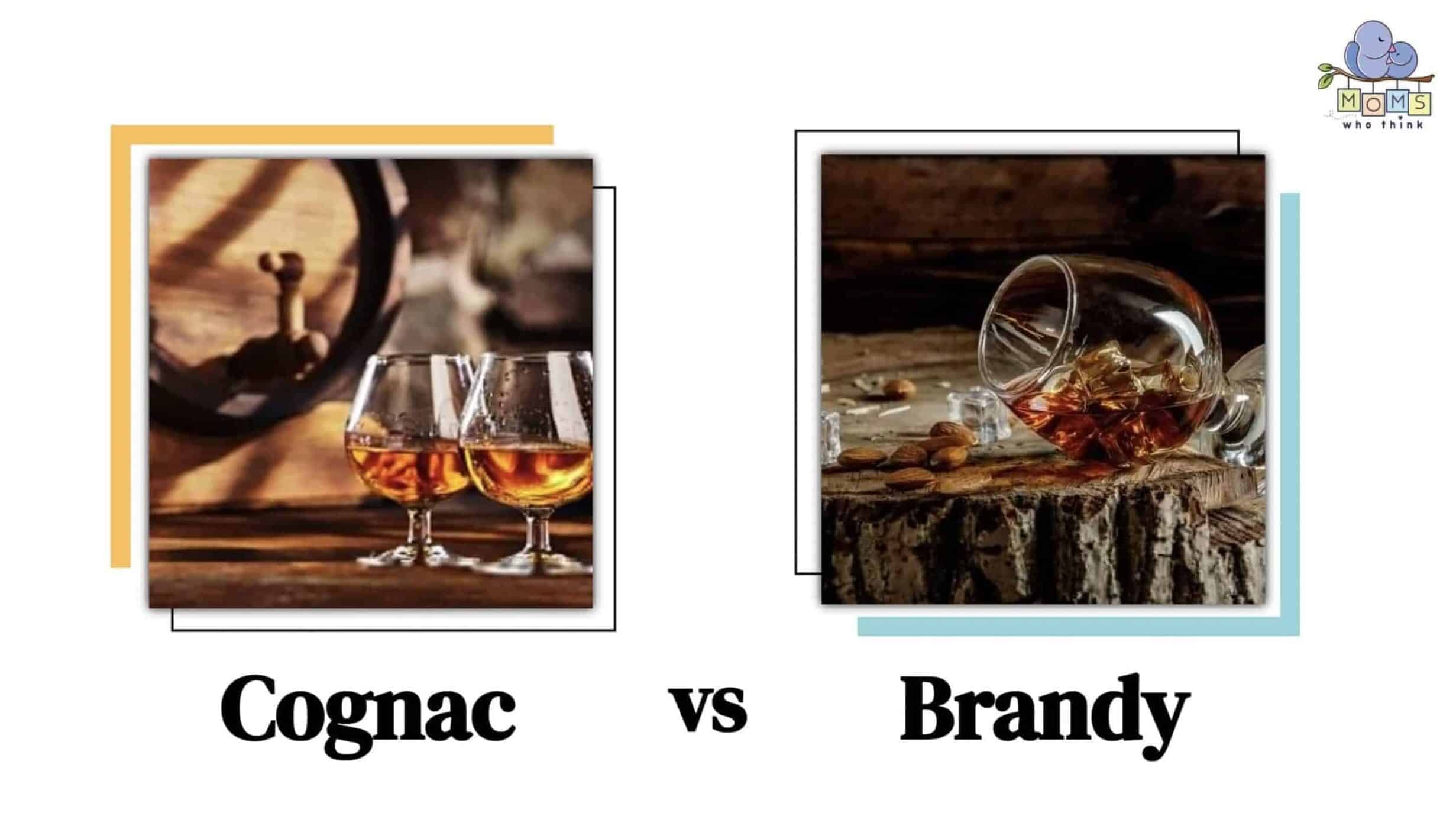
Cognac vs. Brandy: How Are They Different?
The largest difference between cognac vs. brandy is that cognac is made from white grapes of the Cognac region of France. Meanwhile, brandy wine can be made with other regional grapes and other fermented fruits. They undergo a similar distillation process and aging periods. But cognac is blended after aging, which is when it truly becomes a cognac (via Harry's Bottle Shop).
What Is Cognac?
Cognac liquor is a blended form of fermented white grapes that must come from Congnac, France. This is one of the requirements for this alcohol to be considered a cognac liquor. This is also why, despite the fact that brandies can be made with grapes, if they don't come from the Cognac region, it is not cognac. One could argue that all cognacs are brandies. However, because they come from these special French white grapes, they are classified as cognacs. Cognac is sweet, often enjoyed after dinner or in nicely blended cocktails, and amber, golden in color.
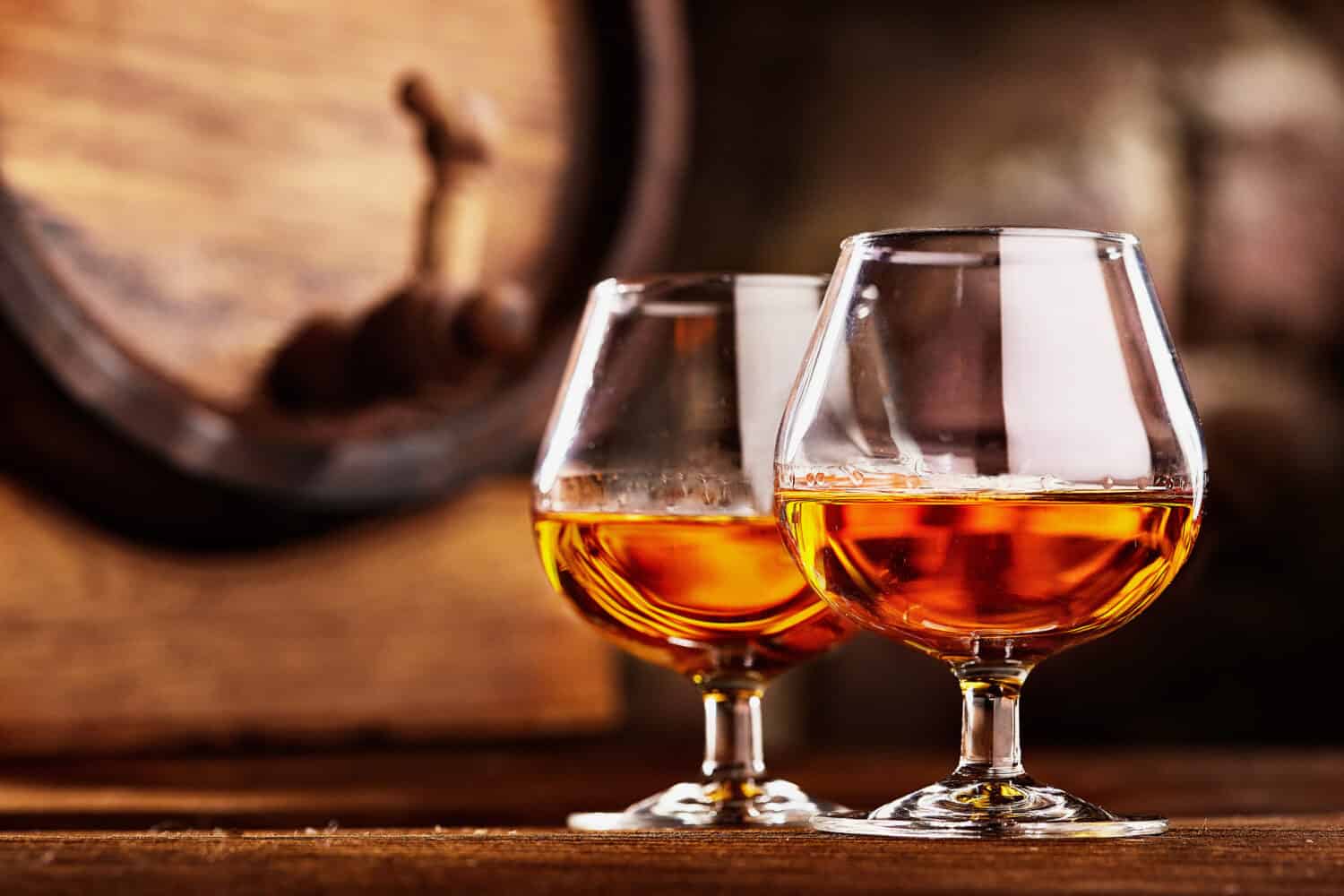
Cognac is considered a digestif, enjoyed after mealtimes for its sweet flavor and smooth finish.
©Vania Zhukevych/Shutterstock.com
History And Origin of Cognac
Cognac has been around since the 16th century when Dutch people first made their way to France. As they began to imbibe in the culture of good French wine, they wanted to bring it home with them. On their journey home they had a hard time keeping the wine drinkable. This was due to long travels and poor conditions. So, they further fermented and distilled the French grape wine into a mixture they referred to as ” eau-de-vie,” or the “water of life.” They called the fermented sweet wine product, “brandewijn” which translated to “burnt wine.” And thus the process of distilling white grape wine from France was born. The fact that the grapes came from Cognac is what differentiated this kind of alcohol from what would eventually be brandy wine (via The Cognac Show).
Larger cognac production houses formed in Europe and the U.K. They instituted strict guidelines that the grapes used in Cognac must be the white grapes of the region. Cognac processing was streamlined with technological advances in distillation and aging techniques. In the 1870s, an aphid known as phylloxera decimated many of the Cognac grape crops. This called for future growers to breed and cultivate phylloxera-resistant plants. Modern-day, the Ugni Blanc grape variety is the standard plant used for Cognac creation. It is popular in cocktails and as an after-dinner treat. Cognac has maintained its popularity despite numerous other types of alcohol with similar characteristics.
How Cognac Is Made
Cognac is made from white grapes from Cognac, France. First, it is made into wine, distilled two times through, and aged in barrels for a minimum of two years, but often for longer. The most common type of grape used is the Ugni Blanc, though eight French white grape varieties are allowed in Cognac production. These other breeds include Colombard and Folle Blanche, Jurançon, Belzac Blanc, Blanc Ramé, Bouilleaux, and Chalosse. Harvesting happens in October, during which time the grapes are juiced, and left to ferment until there is at least a 9% alcohol by volume content (abv).
Next comes the distillation process, which involves two different distillations in copper pot stills. Distillation is required to happen starting at the end of November and ending by the last day in March of the following year. This is another requirement set up by major Cognac houses for its differentiation from brandy wine. The first distillation goes through a boiling procedure in which the resulting vapor condenses back into liquid, now considered “brouillis.” This interim spirit has a 30% abv and goes through one more distillation before the mixture is poured into wooden barrels to begin its aging process. The type of oak barrel, whether it's made from Limousin or Tronçais oak, can have an effect on the flavor of the Cognac. The resulting spirit is referred to as the “eau-de-vie,” which is then blended into its final form of cognac (via Cognac Show).
Popular Cocktails Using Cognac
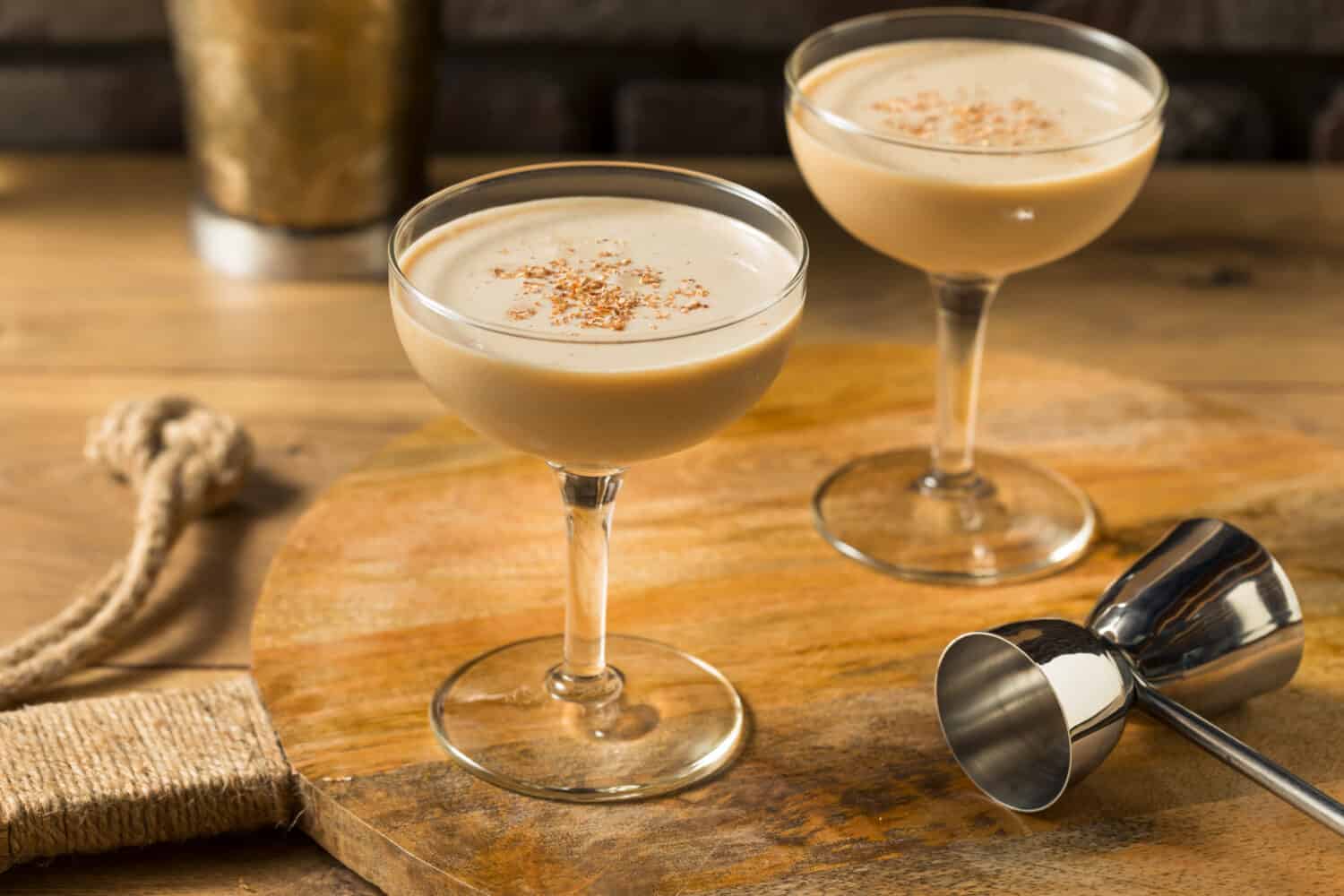
Featured above is the Brandy Alexander Cocktail with cognac, creme de cacao, cream, and nutmeg.
©Brent Hofacker/Shutterstock.com
Cognac's sweet flavor and smooth finish make it an ideal addition to drinks involving creamy textures, fruit juice, and tart combinations as well. Starting off with some classics, there's the sidecar which features cognac, orange liqueur, and lemon juice. Don't forget the sugary rim. Try the French 75, with cognac, lemon juice, simple syrup, and bubbly champagne, or coffee cocktails that combine sweet cognac with creamy coffee flavorings. Enjoy a hot Tom & Jerry holiday drink with eggs, rum, cognac, milk, vanilla, and sugar for a sweet, creamy, and warming drink. There's the French Connection cocktail which is cognac combined with amaretto, an almond-flavored liqueur. The Corpse Reviver No. 1, jokingly named for its ability to revive a hangover, combines cognac, sweet vermouth, and Calvados cider. For more cocktail ideas, check out the rest of the list featured on Liquor.com.
What Is Brandy?
Brandy is a sweet, fermented fruit liquor. It is distilled from wine and can be made with grapes, apples, cherries, pears, apricots, and plums. According to Master Class, there are 8 types of brandy wine. These types differ depending on the fruit used for fermentation, the process, the distillation technique, and its location. These brandies include Cognac, which is a type of brandy, though remember, not all brandies can be cognac, Armagnac, made with grapes from the Armagnac region in Southwest, France, and Applejack, made with American apples. There's also Pisco brandy, an alcohol made with grapes from Peru, and Chile, Grappa, an Italian-Swiss brandy made from pomace, the leftovers of wine-making, and brandy de Jerez, a Spanish brandy made with grapes and other stonefruits. Finally, Kirschwasser brandy, made from dark cherries, and Calvados, apple brandy with apples hailing from Normandy, France.
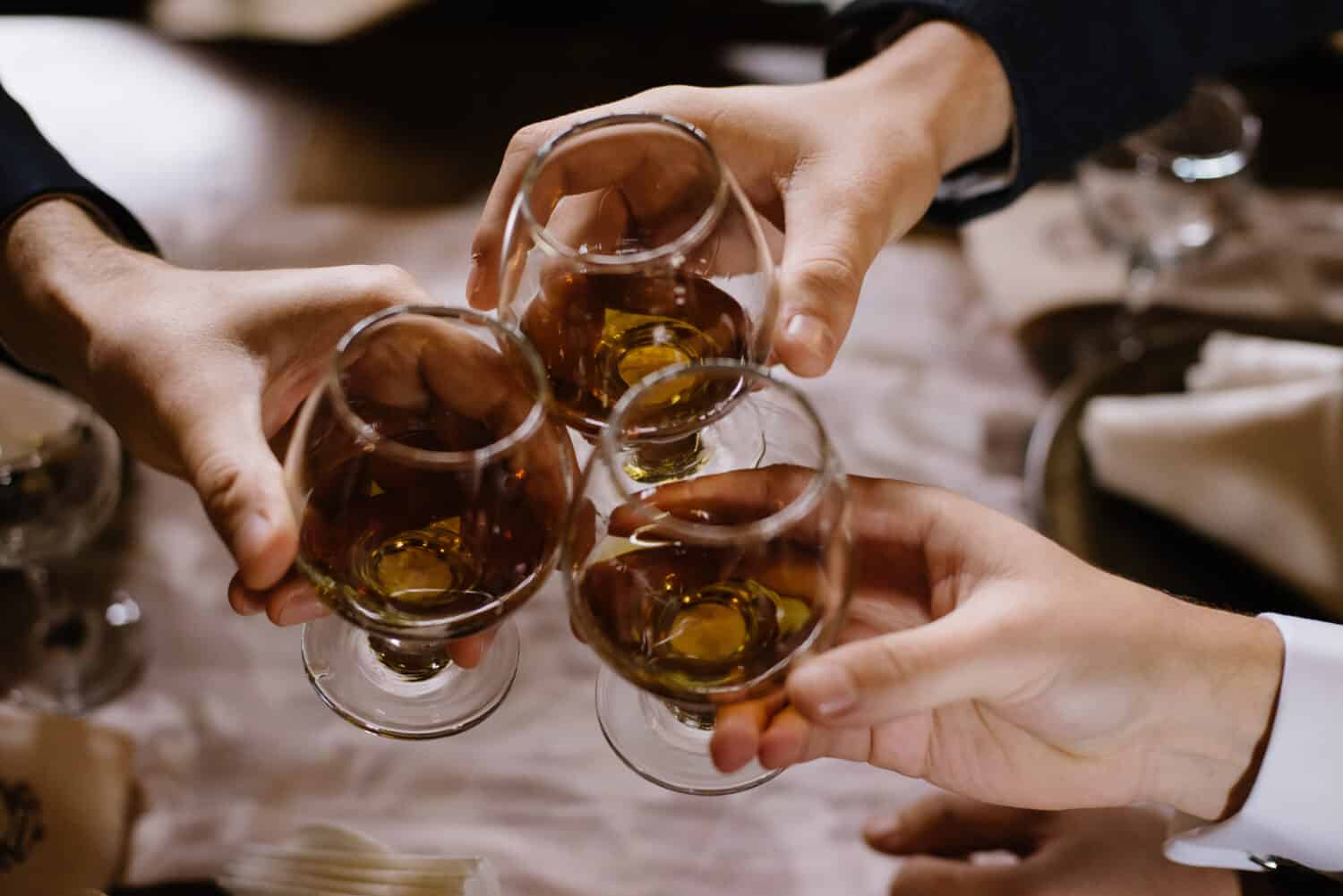
There are 8 types of brandy, all of which have different processes and varying fruit bases.
©Liliia Mykhalevych/Shutterstock.com
History and Origin Of Brandy
Brandywine has roots in Dutch distillation, as mentioned above in the history of the Cognac section. Brandywine can also be traced to 14th-century France, where people used the fermented “l’eau de vie,” for its sanitizing, and healing properties. George Washington encouraged distillation in American colonies in 1797, eventually becoming one of the largest distilleries in young America. Applejack brandy started production in America in New Jersey, circa 1780. This was the outcome of readily available apples and other fruits that could be fermented to create a similar sweet wine. Over the years, techniques were updated to increase the efficiency of distilling and processing all kinds of Brandywine (via The Brandy Bar). Now, let's learn more about the process for Brandywine creation.
How Brandy Is Made
Similar to cognac, brandy is first made into wine and then further distilled, sometimes multiple times depending on the kind of brandy. Using low heat, the distillation vaporizes and then condenses, creating a higher, more concentrated alcohol content. Next, the Brandywine mixture is stored in oak barrels for further fermentation and aging. Certain varieties may be further diluted with water and fruit to increase the flavors and decrease the abv percentage. Modern-day brandy goes through a grading system by age. The breakdown of this rating system is as follows: “V.S” ratings indicate a “very special” young Brandywine blend that has been aged 2 years. “V.S.O.P” or “very superior old pale” is a kind of reserve brandy that has been aged for 4 years. “X.O,” or “extra old,” is aged, at a minimum, of 6 years. And finally “hors d'âge,” or “beyond age,” which involves at least 10 years of aging
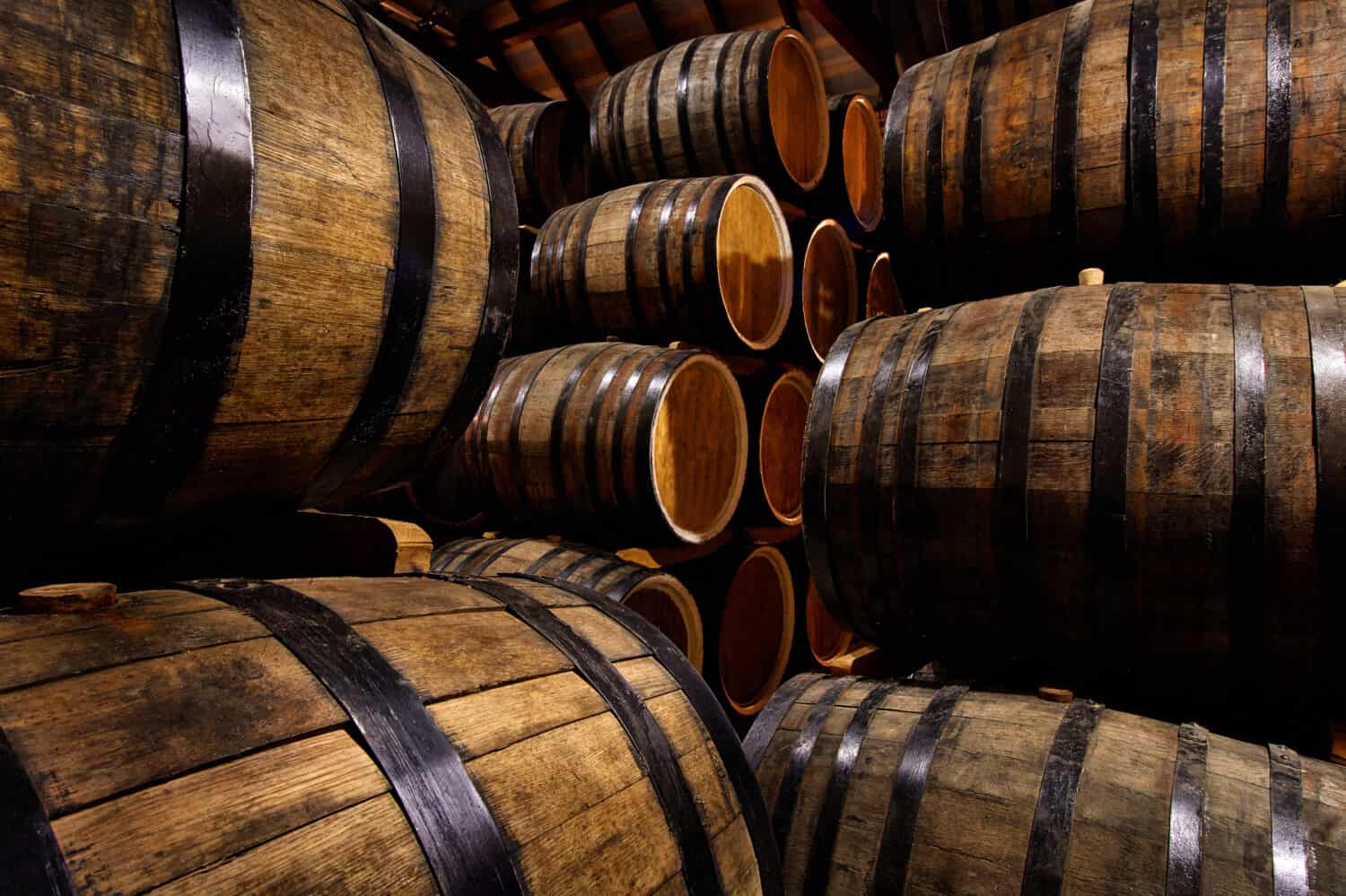
Like cognac, brandy is aged in oak barrels, sometimes for as long as 10 years!
©GolubSergei/Shutterstock.com
Popular Cocktails Using Brandy
Some popular cocktails involving Brandy include the likes of the Brandy Alexander, which can also be made with cognac, the brandy sour with lemon juice, egg white, cherries, bitters, and brandy. A Marzipan Old-Fashioned involves amaretto, simple syrup, and bitters with brandy. You can use Brandywine in sangria, with all kinds of fruit and delicious other flavors. It's also an ingredient of mulled wine with apple brandy, apples, and apple cider (via BBC Good Foods).
Cognac vs. Brandy: Final Thoughts
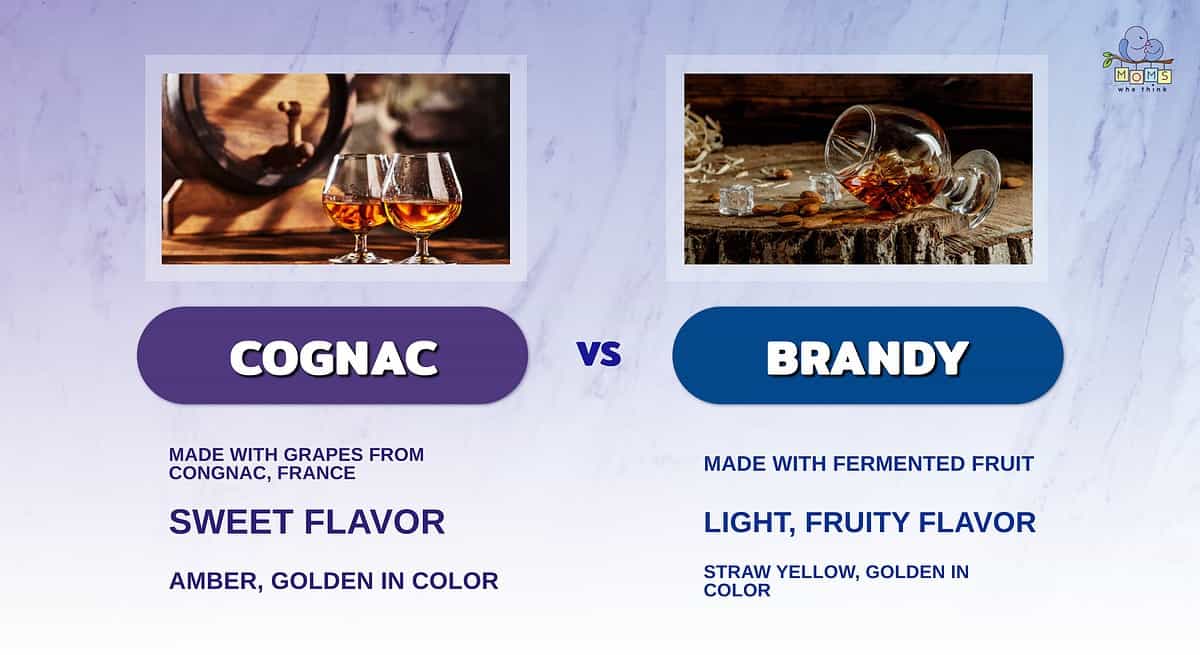
You can't go wrong with choosing either cognac or brandy to enjoy after dinner. Both have a sweet taste and are similar in coloration. Here are a few of the differences that set them apart:
- Cognac is only made from white grapes from Cognac, France.
- Brandy is made from grapes and can be made from other fruits.
- Cognac is blended after aging.
- Cognac has been around since the 16th century, and brandy has been around since the 14th century.

The Classic Hot Toddy
Ingredients
- 12 ounces of your favorite brown liquor (brandy, whiskey or rum)
- 8 Tablespoons honey
- 4 ounces lemon juice
- 8 cup hot water
- cinnamon sticks and star anise for garnish
Instructions
- Heat water in a large saucepan.
- Add the liquor, honey and lemon juice, stir to combine.
- Divide evenly between 8 warmed mugs.
- Garnish with a cinnamon stick or star anise.
The image featured at the top of this post is ©Vania Zhukevych/Shutterstock.com

